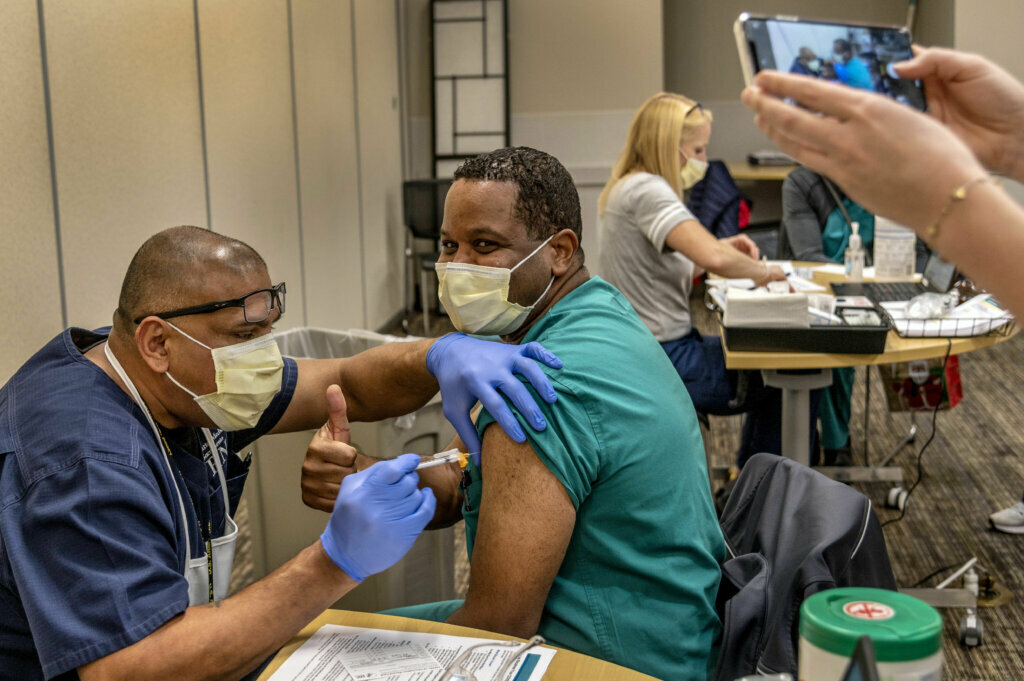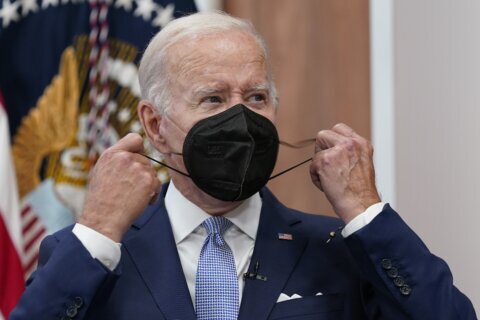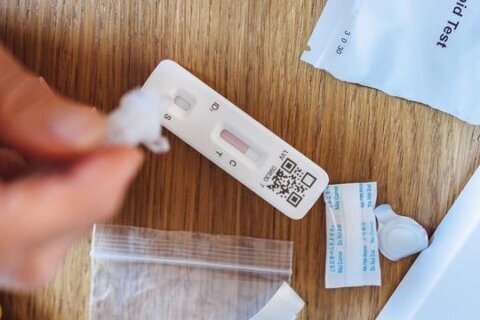
The U.S. is far from out of the woods when it comes to the COVID-19 pandemic, but with vaccines now going out, front-line workers are getting a hopeful sign.
Dr. Brian Garibaldi, a critical care doctor at Johns Hopkins Hospital in Baltimore, said the Pfizer vaccines, and possibly soon the Moderna vaccine, are lifting spirits during an arduous battle.
“The vaccine is a tremendous boost for morale for front-line health care workers at our hospital,” Garibaldi said.
During a webinar Friday hosted by Johns Hopkins, Garibaldi — who served on a team of doctors that treated President Donald Trump for COVID-19 in early October — said he and others in his field realized that there is still a lot of work ahead as the U.S. awaits widespread vaccinations.
“Unfortunately, seeing the light at the end of the tunnel also highlights how far we have to go, and how much work is still left to do before we get there,” he said.
Even for those first on the list to get vaccines, it could take weeks or months before everyone is vaccinated, according to Garibaldi. He won’t receive his vaccination until Christmas Eve.
Garibaldi said health care workers also still live in fear of a big spike in COVID-19 patients at their hospitals that could potentially limit the care they can provide to those who become critically ill.
“That’s probably the thing that keeps most of us up at night,” Garibaldi said.
He added that health care providers now have more therapies to treat sick patients, know how to better spot patients who may become critically ill and are better at taking the steps they need to keep themselves safe from the coronavirus.
But overwhelmed hospitals could serve as a setback to all progress seen so far.
“I do really worry that, as the number of cases and hospitalizations have started to rise, we’re going to overwhelm those gains that we’ve made over the last several months, and we are going to see more people get sick and, unfortunately, pass away,” Garibaldi said.
William Moss, the executive director of the International Vaccine Access Center at Johns Hopkins’ Bloomberg School of Public Health, said there is still a lot to learn about the Pfizer and Moderna vaccines, information that will come in the months ahead.
Among questions yet to be answered: How long will the vaccines protect someone from COVID-19? Could there be long-term side effects? Should children or pregnant women take it?
There are also questions about its impact on people who are immunocompromised, or if different brands of the vaccine can be mixed.
But, Moss said, looking at the data taken so far indicates both vaccines are impressive. “They both share very high protective efficacy, around 95%, which is just truly amazing,” he said.
Moss added that one struggle will be convincing everyone to get the vaccines, especially since there are some people in communities hit hard by the virus who are expressing concern about taking the vaccine.
“I can assure everyone that despite the speed of the development of these vaccines, no corners were cut,” Moss said.
Nationwide, many states continue to see significant spikes in coronavirus infections, and the death toll has been steadily climbing.
“That we are pushing to 4,000 deaths per day is really unfathomable,” said Jennifer Nuzzo, an associate professor at the Johns Hopkins Center for Health Security.
Nuzzo said the rising positivity rates — exceeding 11% nationwide — and testing numbers show that increased cases are outpacing the nation’s work to expand COVID-19 testing. “Any hope of particularly protecting those who are known to be most vulnerable to the virus, it becomes much, much, harder,” she said.
Though the U.S. does perform more tests than many other countries, Nuzzo said the positivity rate is the concerning number. She said even if countries that are undertesting their population expanded their capacity, she doesn’t believe an increase in testing would lead to the U.S. no longer leading the world in cases.
“I don’t necessarily believe that it would completely flip our status as a leader in terms of the size of our epidemic,” Nuzzo said.
Johns Hopkins has created and maintained a COVID-19 dashboard that has been relied on heavily to track cases in the U.S. and around the world. Now, with vaccines starting to go out, the dashboard will include vaccine numbers.
Right now, only a handful of states are providing vaccination numbers, but researchers hope that more states, D.C. and other U.S. territories will soon make data available on how many vaccines are going out and where they are going.








